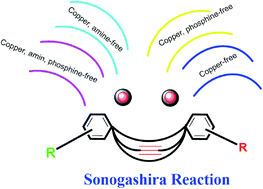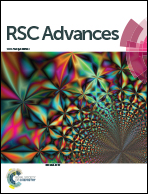Copper-free Sonogashira cross-coupling reactions: an overview
Abstract
The Sonogashira reaction is a cross-coupling reaction of a vinyl or aryl halide with a terminal alkyne to form a C–C bond. In its original form, the Sonogashira reaction is performed with a palladium species as a catalyst while co-catalyzed by a copper species and a phosphine or amine. The reaction is conducted under mild conditions, i.e., room temperature, aqueous solutions, and the presence of mild bases. Undeniably, the Sonogashira reaction is among the most competent and efficient reactions widely used in organic synthesis. This named reaction has proved useful in many organic synthesis areas, including the synthesis of pharmaceuticals, heterocycles, natural products, organic compounds, complex molecules having biological activities, nanomaterials, and many more materials that we use in our daily lives. The presence of transition metals as a catalyst was indeed essential in the Sonogashira reaction. However, recently, the reaction has been successfully conducted without copper as a co-catalyst and phosphines or amines as bases. In this critical review, we have focused on developments in the Sonogashira reaction successfully performed in the absence of copper complexes, phosphines or amines, which could be of particular advantage in implementing green chemistry principles and making the reactions more achievable from an economic viewpoint.

- This article is part of the themed collections: 2021 Reviews in RSC Advances, Catalysis for sustainable development and Sustainable synthesis


 Please wait while we load your content...
Please wait while we load your content...